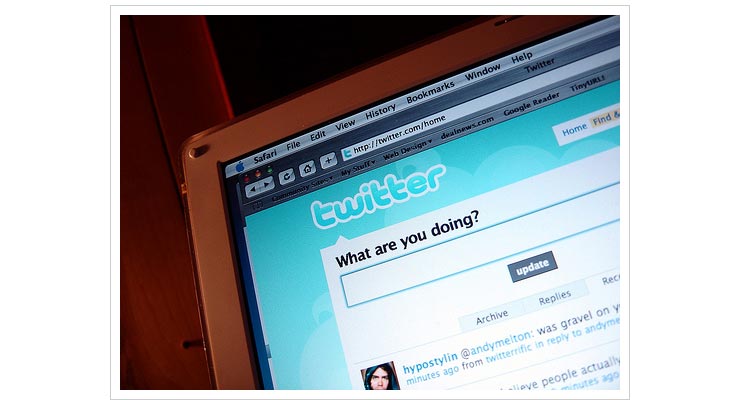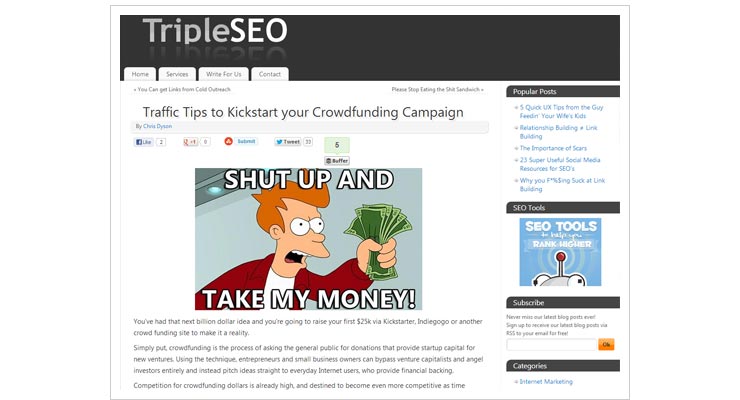There’s one thing all good content marketing campaigns have in common and that’s goals.
Whether you need more sign-ups to your newsletter, opinions on a survey or cash sales, your content marketing campaign must include goals.
How else can you measure the success of your writers and SEO specialists?

Goal setting (image source: vfsdigitaldesign)
The problem is many people lose sight of the importance of each part of a content marketing campaign because it can be hard to attribute conversions to specific points of contact with a customer.
A typical company uses at least a three-pronged approach to content marketing.
- Sharing links on social networks directly from a blog content page.
- Earning back links by guest posting on a high PR blogs.
- Sharing blog posts via a social sharing site like Stumbleupon or Flauntt.
Regardless of how the company content is marketed, it’s obvious the blog is going to be central their content production. It’s where businesses demonstrate company knowledge, skills, achievements and offer a platform for readers to interact and offer opinions or respond to calls to action. The problem with nailing down conversion statistics and using them as Key Performance Indicators (KPIs) is you rarely have a way of knowing the first point of contact in a content marketing campaign.
Without customers becoming familiar with a brand through twitter broadcasts, mentions on high PR websites and increased rankings (giving search engine exposure) because of social sharing markers, the final call to action may never happen. There could be as many as five or six different customer interactions across just as many platforms before a conversion takes place.
Evasive KPIs in Twitter Content Marketing
If a company has a thousand tweets over the course of six months with a hash tag that their target audience monitors, there’s a good chance the company name will be familiar to potential customers. The tweets in question could have originated from a number of accounts such as staff, fellow tweeters using Flauntt.com or direct shares from the website itself.

Nailing down Twitter traffic can be tricky (image source: trekkyandy)
Each of the accounts could equally be responsible for a customer’s first contact with the business because it is often a question of timing. There is no real way of knowing how the customer first came to trust the brand. If, like most businesses, you market content using multiple industry-relevant hash tags, you have an even more difficult job of nailing down the source of the conversion.
The results for individual posts can be similarly confusing because links placed on LinkedIn, Facebook, Google+ could be responsible for conversions, but so could links on any other social network on which you post content links. Sure, you can monitor the traffic sources, but the traffic from LinkedIn or Google+ could be better converting traffic than Facebook, but it depends on your industry. The fact is, social media marketing of content is not an exact science.
When Content Marketing is Easy
There are always exceptions. Commission enough content or write enough quality blog posts and you will strike gold at some point. There will be one piece of content shared and re-shared more than anything else you produce in any twelve-month period. Trying to recreate that event is an obvious tactic and you don’t need to be an SEO professional to understand why.

An example of some cracking content (source: TripleSEO)
It could be because you link to the content from a particular forum because it answers a question that many people were asking or it could be because you struck the right keyword as it was emerging and the keyword tools had not yet picked up on it. Whatever it is, your content will convert brilliantly if you ask visitors for their business, email address or opinion at the right time. People appreciate good content and if they make it to the end of a blog post or they have shared your infographic, the chances are, they like what you do and are happy to reward your efforts with a positive response to a call to action.
Increased Chances of Successful Content Marketing
There’s a good chance that your content marketing hits gold one day because there are enough social markers through social sharing and blog mentions, that Google or Bing realise you have content worth ranking. SEO experts (I could call them something else) guaranteeing first place positions on SERPs within three months or less are deluded or lying.
There are no guarantees in content marketing, except that Google tends to reward those that work to establish their reputation. It’s in Google’s best interests to provide good results for searchers and this is why Panda and Penguin algorithm updates continue to ruin the careers of spammers.
The only way to increase your chances of success is to work hard and work with people who produce quality content. Market anything else or associate poor content with your brand and you will waste time and money. Does anyone honestly think a call to action on a poorly written page will produce conversions? Does anyone think a link building campaign will provide any search ranking value if the links created are given and not earned? I hope not.
Final Thought on Content Marketing (for now)
Going back to the subject and title of this blog, you don’t get anything unless you ask, but ask from a position of strength and you stand a chance of success. Set goals and include micro-goals such as incremental steps up the ranking for keywords in Google Webmaster tools and acquiring a certain amount of quality back links. Set these simple targets, meet them and your visitors will welcome a call to action.
